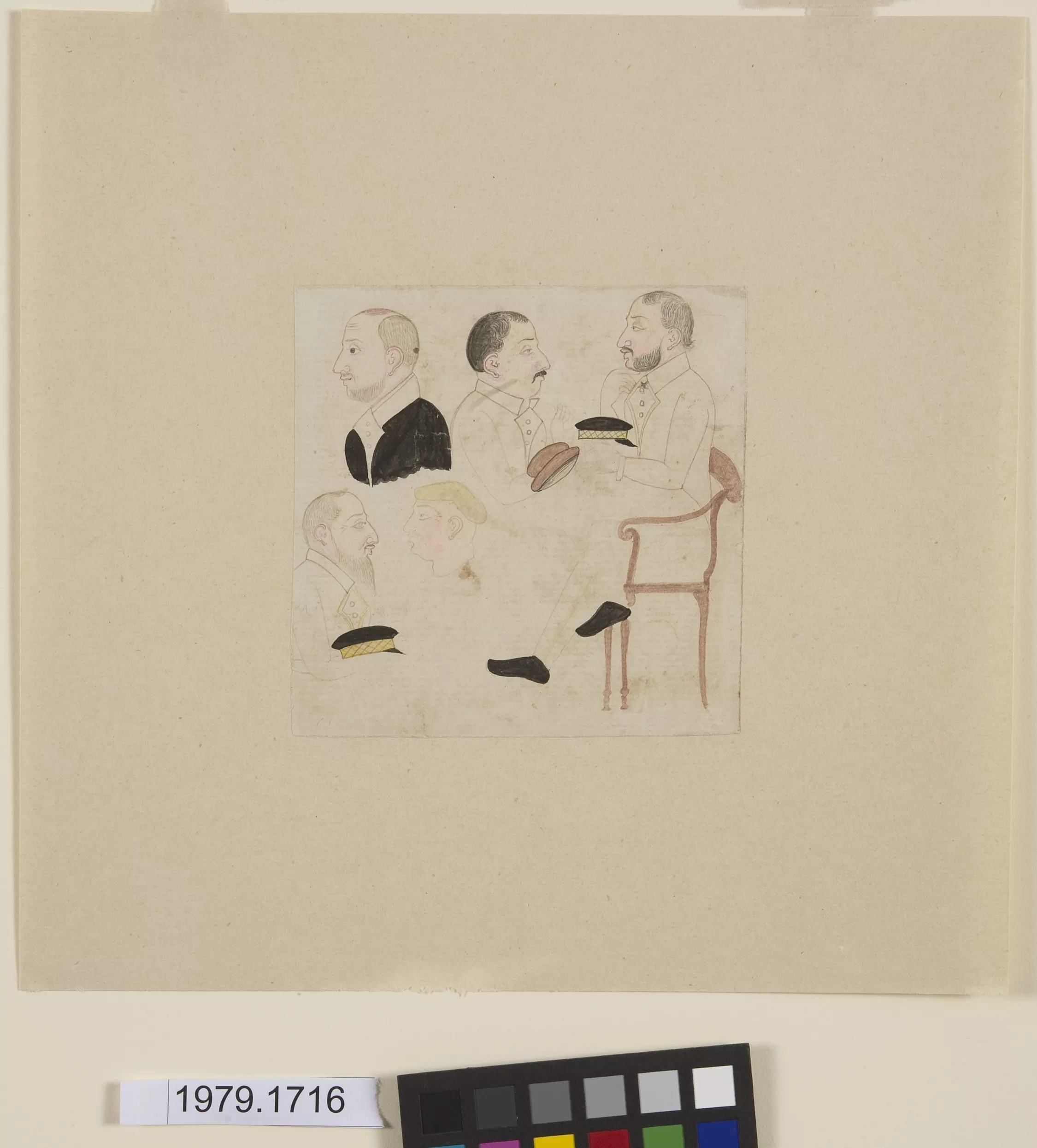Exhibit
Creation Date
1850
Height
12 cm
Width
11 cm
Medium
Genre
Description
The art historian Pramod Chandra gives a description of Studies of European Figures, quoted below:
[A] study sheet shows four European figures, one of them seated on a chair and three busts. The artist seems to have been trying to acquaint himself with unfamiliar anatomies, and also with the shapes of European caps. (Chandra 65)
As Pramod Chandra notes in his description of the image, the artist does seem concerned with capturing the detail of the European hat; the faces, however, instead of being realistically depicted, seem stylized. Each face is in strict profile, and although each figure differs in hair style and color, their overall physiognomy is similar: each shares the same elongated nose, almond-shaped eye, and arched eyebrow. It seems then that the artist is working from an Indian visual aesthetic to capture the European face. Additionally, the artist's emphasis on hats demonstrates his preoccupation with the ways in which clothing signifies social status and religious affiliation. Similar to amateur photographers who traveled to India in the late nineteenth century to "find" the picturesque (even though this was an aesthetic grounded in the British landscape), this Indian artist imposes his own cultural aesthetic on the foreign, European subjects before him (Ryan 55). Consequently, like A Nobleman Listening to Music, this image enacts an inversion of power in which the native assumes the role of the European.
During the time this image was created, Britain was establishing a centralized government in Rajasthan. By 1817-18 the British Raj had signed treaties of alliances with most of the states of Rajputana (currently known as Rajasthan). The Rajput rulers were allowed to maintain their titles and prestige, but they were required to govern according to British law. Because we do not know the the identity of the artist, it is further unknown what types of cultural interactions may have occurred between the artist and his patron.
Study of European Figures relates to the Romantic visual aesthetic by unsettling and complicating the notion that the Indian artist of the nineteenth century simply attempted to copy the Western use of color, perspective and realism. Instead, this is a prime example of how an Indian artist might work a European face into an already standard paradigm of facial physiognomy. Apparent in this image is the prototypical Mughal face, in strict profile, with arched eyebrows, tapered eyes, heavy lids and an elongated nose. Even the receding hair line is similarly featured in all the figures. Consequently, this image exemplifies the hybrid art forms generated by the complex interactions of metropole and colony during the Romantic period.
Locations Description
Mewar is located in Rajputana (currently known as Rajasthan) in the northwest corner of India.
Accession Number
1979.1716
Additional Information
Bibliography
Bayly, C. A. Indian Society and the Making of the British Empire. Cambridge: Cambridge UP, 1990. Print.
Chandra, Moti. The Technique of Mughal Painting. Lucknow: U. P. Historical Society, 1949. Print.
Chandra, Pramod. Indian Miniature Painting; the Collection of Earnest C. and Jane Werner Watson. Madison: Elvehjem Art Center, University of Wisconsin; distributed by U of Wisconsin P, 1971. Print.
Ryan, James R. Picturing Empire: Photography and the Visualization of the British Empire. London: Reaktion Books, 1997. Print.

